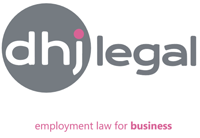The Equality Act 2010 (“the Act”) protects job applicants, workers and contractors from adverse treatment based on protected characteristics. Protected characteristics are:
- age,
- disability,
- gender reassignment,
- marriage or civil partnership,
- pregnancy or maternity,
- race,
- religion or belief,
- sex and Employees who consider that they have suffered discrimination related to a protected characteristic may claim in the employment tribunal. Employees do not need to resign or to be dismissed in order to bring a discrimination claim
- sexual orientation.
The adverse treatment prohibited by the Act is:
- direct discrimination,
- indirect discrimination,
- harassment and
- victimisation.
Each of these concepts is explained below.
Direct discrimination
This is where an individual is treated less favourably because of a protected characteristic. It also occurs where an individual is mistreated because he or she is wrongly perceived to possess a protected characteristic or because he or she associates with persons who have protected characteristics.
Examples:
- A manager does not appoint a female job applicant to a job because of concerns that she will not fit in with male colleagues. The candidate has suffered direct discrimination because of sex.
- A manager does not like that an employee has gay friends. The employee is disciplined for a minor mistake because of this. The employee is not gay but has suffered direct discrimination because of sexual orientation.
- A manager does not allow an employee to attend a training course because he mistakenly thinks the employee will soon reach pensionable age. The employee is younger than he looks and has suffered direct discrimination because of age.
Direct discrimination cannot usually be justified.
Indirect discrimination
This is where an employer applies a blanket rule or policy to a workforce or part of a workforce and that rule impacts adversely on individuals with a protected characteristic.
Examples:
- requiring all post-holders in a particular job to work full time which may impact adversely on women with childcare obligations.
- having strict dress codes that are applied to everyone, but which impact on individuals of a particular religion.
However, employers may “objectively justify” imposing such rules or policies where they are pursuing a legitimate business aim and can show that they are acting proportionately (e.g. by considering alternatives).
Harassment
This is unwanted conduct related to a protected characteristic that has the purpose or effect of violating an individual’s dignity or which creates an adverse environment for him or her.
Harassment that occurs because of association or perception is also unlawful.
Harassment covers a wide range of behaviour including physical aggression, offensive jokes/emails, name calling and excluding or ignoring someone.
Victimisation
This is where individuals are mistreated for asserting their rights not to suffer discrimination under the Act, for example, by bringing proceedings in employment tribunals or raising an internal grievance that alleges discrimination.
This protection also covers individuals who assist or support others who rely upon their rights under the Act and is perhaps more easily understood as retaliation.
Disability discrimination
In addition to protection against direct and indirect discrimination, harassment and victimisation, it is unlawful for employers to treat a disabled employee unfavourably because of something arising in consequence of his or her disability. This outlaws mistreatment that arises not because of the disability but from a knock-on effect of the disability such as a period of sickness absence. Employers can objectively justify such discrimination where they can show that it was a proportionate means of achieving a legitimate aim.
There is also an obligation to make “reasonable adjustments” to prevent disabled persons being placed at a disadvantage. This can include adjustments to working hours, job content, redeployment, and/or the provision of specialist equipment.
Questions about health
The Act makes it unlawful, in most circumstances, for employers to ask any questions about a job applicant’s health before he or she is offered a job.
Equal pay
Men and women undertaking the same or equivalent work are entitled to receive the same terms and conditions of employment.
Age discrimination/retirement
Retirement: Forcing employees to retire because they have reached a particular age will amount to age discrimination unless the retirement age in question can be objectively justified.
When discussing an employee’s future plans, it is important not to assume that they intend to retire or to try to persuade them to do so. This could amount to age discrimination. Comments that could be linked to an employee’s age (e.g. “Don’t you think it’s time for you to slow down?”) must also be avoided.
Enforcement
Employees who consider that they have suffered discrimination related to a protected characteristic may claim in the employment tribunal. Employees do not need to resign or to be dismissed in order to bring a discrimination claim.
This briefing note should not be relied on as legal advice. This information relates to the UK only. Please contact us for advice on your specific circumstances.
